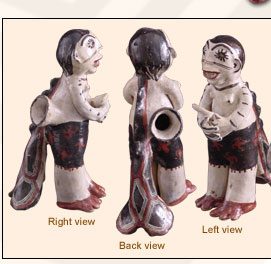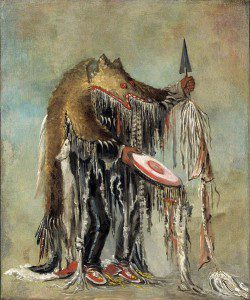 For many indigenous peoples, dreaming is a highly social activity, in several senses. You go places and meet people when you travel in your dream body; they may be people in the next village or campsite, or beings in another world. You also have interactive dreams in which you meet and share adventures with other dreamers.
For many indigenous peoples, dreaming is a highly social activity, in several senses. You go places and meet people when you travel in your dream body; they may be people in the next village or campsite, or beings in another world. You also have interactive dreams in which you meet and share adventures with other dreamers.
Dreaming is also social in the sense that you talk about your dreams, maybe with whoever is stirring in the same cabin or the big house in the middle of the night, and you help each other figure out what went on in the dream and what you need to do.
Among the Canelos Quichua of Ecuador, husband and wife sleep on either side of the center of the house, and take off on their dream travels from their respective sides. They frequently wake during the night and talk about their experiences. They may agree to return to a certain dream place and continue an adventure together. However, there are some dreams that are so powerful or so dark you’ll hold them secret or share them only with specialists — shamans or medicine people or your favorite grandmother — who know about these things.
It is not unusual among indigenous dreamers for two or more people to find themselves, like the Canelos Quichua, having adventures together inside the dreamspace. An interactive dream experience may be felt to have greater objectivity. If more than one person has experienced it, then there is a stronger reason to believe in what happened, or what could happen in the future, as revealed by the dream.
The Dine (Navajo) medicine woman Walking Thunder recounted that she and her husband dreamed the same night of buying a new car. In both their dreams, they had an accident after leaving the dealership. Trusting that a future event they had both dreamed was likely to take place, they decided to postpone buying the new car for a month, shifting the time frame beyond the one exposed in the dream, and had no problems
Canelos Quichua drinking vessel in the form of a spirit woman. In the Whitten Collection at the Spurlock Museum.
Article adapted from The Secret History of Dreaming by Robert Moss. Published by New World Library.

